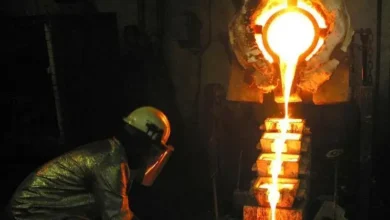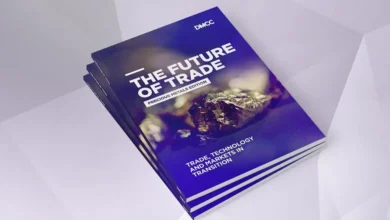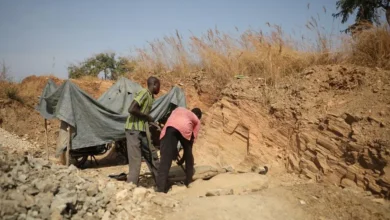
Although Korea famously lacks abundant natural resources, that does not mean the country is completely excluded from the global mining industry.
In fact, Chile’s minister of mining looks forward to collaborating with Korean companies in investing in mining key resources such as lithium.
Chilean Mining Minister Aurora Williams recently visited Korea for meetings with Seoul’s Trade Ministry and Korean companies and research institutions. The Chilean government is eyeinga memorandum of understanding (MOU) with the Trade Ministry regarding Korean investment in the country’s mining sector, according to Williams.
”We have a great interest for the Korean government and companies to collaborate with Chile in accessing critical minerals,” said Williams during an interview with the Korea JoongAng Daily at the Chilean Embassy in Jung District, central Seoul, earlier this month.
Williams also outlined in detail the recent changes in mining policies in Chile, the effort the Chilean government is putting into attracting foreign investment and how new technologies such as automation are being implemented in the industry.
The following interview has been edited for length and clarity.
![An aerial view of a copper mine at Los Andes Mountain range near Santiago city, Chile on Nov.17, 2014. [REUTERS/YONHAP]](https://koreajoongangdaily.joins.com/data/photo/2024/06/25/9a75c3e7-5610-485d-90e2-46136ffb779d.jpg)
An aerial view of a copper mine at Los Andes Mountain range near Santiago city, Chile on Nov.17, 2014. [REUTERS/YONHAP]
What measures is the Chilean government taking to attract foreign investment in the mining sector, especially that from Korean companies?
In Chile, we have a specific institution called Invest Chile to promote and foster direct foreign investment in Chile. This institution is also part of the minister’s delegation here in Korea.
A significant focus is on attracting foreign investment in the lithium sector. We have opened processes inviting companies to collaborate with state enterprises Codelco and Enami on lithium projects. Additionally, we are calling for national and international investors to express interest in exploring and/or exploiting lithium deposits in the nation’s salt flats. These efforts aim to engage foreign companies and investors in developing Chile’s lithium industry.
Recently, we announced a call for specialized lithium producers, both national and international, to be awarded 25 percent of the equivalent lithium carbonate production that Albemarle generates in the Salar de Atacama. This will be offered at preferential prices to companies committed to manufacturing value-added products in Chile.
Regarding Korea, we would like to develop a collaborative approach with this country. We have a joint technical bilateral committee between Chile and Korea where we discuss mining issues. We are also starting to develop a memorandum of understanding with the Korean Trade Ministry.
How does the mining sector currently contribute to Chile’s GDP, and what are projections for the next five years?
In 2023, Chile’s mining sector contributed 11.9 percent to the country’s gross domestic product. According to the Ministry of Finance, the mining GDP is expected to grow annually by 4.6 percent in 2024, 3.5 percent in 2025, and maintain a steady annual increase of 3 percent from 2026 to 2028.
Can you elaborate on the recent changes in mining policies and regulations in Chile? How do you aim to balance economic growth and sustainability?
Chile has a very long-run institutionality, considering that we have been mining for over 100 years. By now, we have a specific environmental assessment institution and an independent environment court. Also, it is important to mention that we have a legal framework for climate change regulation, and as the Ministry of Mining, we are starting the first climate change plan. This process requires the stakeholder’s participation, which has just started.
In recent months, Chile has implemented two significant changes in its mining sector. The first is the Mining Royalty Law, which aims to create a fairer distribution of tax revenue from mining to the regions where it operates. The second change is the approval of a law that updates the Mining Code, the primary regulatory framework for the sector. Key changes include a new mining patent scheme with progressive increases for inactive mining properties and new geological information requirements for exploration projects to make data publicly accessible.
How is the mining industry in Chile leveraging new technologies, such as automation and artificial intelligence, to improve efficiency and safety?
Automation, including the use of autonomous equipment and remote control capabilities, along with artificial intelligence, has significantly benefited the mining industry. These advancements have enhanced precision and efficiency, leading to increased productivity and improved safety by reducing exposure to risks.
The mining sector has successfully harnessed the advantages of Industry 4.0, integrating technologies from various industrial sectors. In Chile, large-scale mining has made significant strides with the development of Integrated Operation Center (CIO) projects, with several already operational and others in the implementation phase.
Additionally, automation and artificial intelligence have expanded employment opportunities in roles that historically required on-site presence, often in challenging and extreme conditions. This development is particularly beneficial in the diverse environments where mining occurs in Chile, alleviating some of the difficulties faced by certain groups of people.
These advancements not only boost performance but also promote greater inclusivity within the mining sector, opening new possibilities for enhanced operational efficiency and a more diverse workforce.
What role does research and development play in advancing the mining sector in Chile, and what are the current R&D priorities?
According to the Chilean Copper Commission, spending on R&D in 2018 continued its downward trend from 2011. However, the recent pandemic and the digital transformation have underscored the importance of digitalization and information flow, prompting the mining sector’s integration into Industry 4.0.
Despite the mining sector’s traditionally conservative stance on adopting new technologies, there has been notable growth in an innovation ecosystem. This ecosystem comprises mining companies, suppliers, trade associations, startups, universities, and state organizations, all collaborating to promote and enhance innovation in Chile’s mining sector.
The main drivers for fostering a virtuous mining industry have been classified into four categories: mine processes, plant processes, sustainable mining, and mineral uses. Each category outlines specific R&D areas requiring promotion through collaboration within the mining ecosystem.
What is the current state of labor relations in the mining sector, and how does the ministry handle conflicts between mining companies and workers?
In Chile, the mining sector is notable for its high level of unionization, with over 70 percent of workers organized into unions. This strong union presence reflects the organization and cohesion of workers in this critical economic sector. Collective bargaining, where unions negotiate working conditions and remuneration with employers, plays a vital role in securing substantial improvements in wages, job security, and benefits for mine workers, fostering a fair and balanced work environment. The strength of unions in Chilean mining is essential for effectively representing and defending workers’ interests.
In 2024, an estimated 42 collective bargaining processes will take place, involving 20,000 workers, which is equivalent to 36 percent of unionized workers. These processes are regulated by law, with the Ministry of Labor ensuring compliance and oversight.
How is the Chilean mining sector aligning with global Environmental, Social, and Governance (ESG) standards, and what benchmarks are used to measure compliance?
Companies in the mining sector use various standards to measure their ESG performance. These standards are selected by the companies themselves, reflecting the concept’s origins in private industry.
From a governmental perspective, the Ministry of Mining’s initiatives align with the Government Plan and the National Mining Policy 2050. This policy outlines over 70 goals across four pillars: Economic, Social, Environmental, and Institutional. These pillars support the development of public policies that facilitate ESG initiatives within the mining industry.




